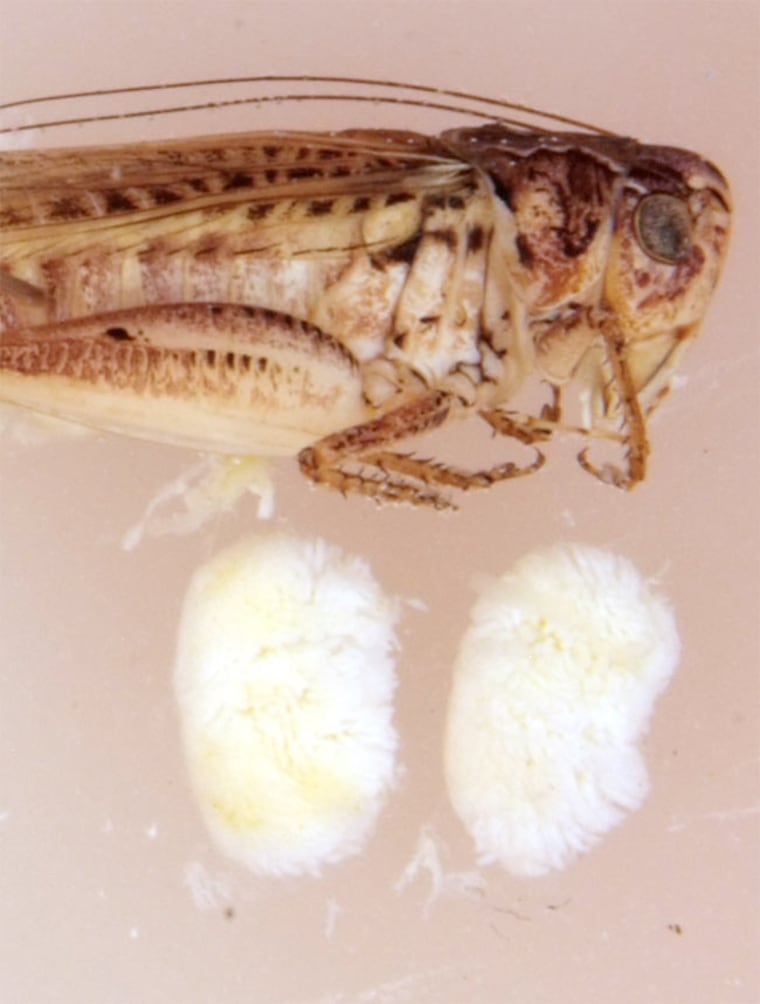A species of cricket has broken an unlikely world record: largest testicles in relation to body weight.
The tuberous bushcricket's testicles account for 14 percent of its body weight. To put that in perspective, the testicles of a man weighing 200 pounds (91 kilograms) with that ball-to-body ratio would weigh 28 pounds (12.7 kilograms).
The bushcricket, whose anatomical extremes were reported Tuesday in the journal Biology Letters, edges out the record of a species of fruit fly, Drosophila bifurca, whose testes-to-body weight ratio has been recorded as 10.6 percent.
Bushcrickets, known in Australia and America as katydids, are found worldwide, said study researcher Karim Vahed, a reader in behavioral ecology at Britain's University of Derby. Tuberous bushcrickets are found in grassy areas of southern Europe, where Vahed and his colleagues often collect specimens to study the evolutionary biology of insect mating.
In most species studied, especially vertebrates, males boast larger testes when females of the species are more promiscuous, Vahed told LiveScience. One explanation for these large cojones is that it enables males to produce more sperm per ejaculate, effectively drowning out the competition.
However, the researchers report, the cricket's large testicles don't produce greater volumes of semen per ejaculate. In fact, they produced less voluminous sperm than smaller testicles. The tuberous bushcricket may benefit not from increased sperm per ejaculation, but from increased stamina over time.
Large testes "allow males to capitalize on the readily available supply of willing females," Vahed said. "They allow males to have a greater rate of ejaculate production rather than producing extra-large ejaculates."
Titillating crickets
One of the advantages of studying insect mating is that females store sperm from every mating event in their bodies, Vahed said, allowing researchers to determine how many times the crickets mate in their few months of life. Tuberous cricket females mate an average of 23 times, putting them on the upper end of the cricket promiscuity spectrum, Vahed said.
Vahed is now researching the vast variety of male cricket titillators, the organs that male crickets insert into female crickets during mating. Titillators come in all shapes and sizes, from smooth to spiny, and no one knows why, Vahed said.
Though the size of the tuberous bushcricket's genitalia was a suprise, Vahed said, the vast variation in gonads among insects makes them good study subjects.
"You're always going to find something new just because of their diversity and how little-studied they are," he said. "Somewhere out there I'm sure there's an insect that will top even the tuberous bushcricket's testes record."
The tuberous bushcricket joins a veritable who's-who list of animals with strange genitalia, including:
- Rodents that enjoy a mating advantage
- Polar bears whose penises are shrinking
- Ducks with penises like corkscrews ()
- Smart bats
And to round out the list, some male fruit bats (Rousettus aegyptiacus) have testes that are 2.15 percent of their body mass, whereas their brains are only 1.70 percent. [See the ].
